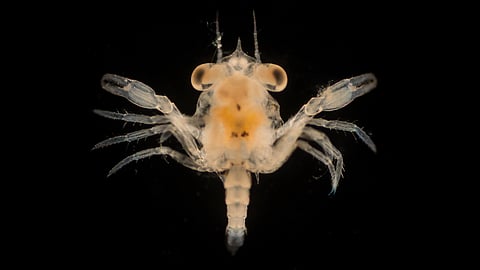Weekend Reads | The Greatest Migration on Earth
by Kevin Schofield
This weekend's read is a fascinating Scientific American article on the "Greatest Migration on Earth."
For many of us, this conjures up images of enormous herds of wild animals trekking across the African savanna. But that kind of migration, amazing in its own right, isn't the largest one on the planet: It occurs in our oceans.
An axiom of life on our planet is that it spreads out to wherever there is open space. It may surprise you to learn that half of all species on Earth are nocturnal, though it makes perfect sense on a planet that's dark half of the time. Likewise, 71% of the planet's surface is covered with water, so we should expect the oceans to be home to a large fraction of the planet's biome. Life forms have been found living in ultra-hot underwater volcanic vents, as well as in ultra-cold water underneath Antarctic ice floes. Given all this, it shouldn't be a surprise that the greatest migration is ocean-based. But the form it takes is not what you would expect.
The migration is vertical, not horizontal; it involves trillions of zooplankton, an estimated 10 billion tons of tiny water-based animals; and it is a round-trip journey made every single day. In what is known as a "diel vertical migration," those trillions of (mostly microscopic) zooplankton worldwide rise up to the surface of the ocean at sunset every evening, only to sink back down to the depths at daybreak, as much as 3,000 feet down.
To scientists' best understanding, zooplankton make this daily trip for two reasons: to eat phytoplankton (water-borne plants) at night, and to avoid predators during the day. Evidence suggests they are triggered by sunlight, even tiny amounts: at a depth of 1,000 feet, light intensity is only .012% of the light that exists at the surface. But being that sensitive to light can lead to miscues as well: Zooplankton have been observed to change their behavior during solar eclipses, polar winters, and even cloudy days.
Scientists have also noticed that the diel vertical migration is not one undifferentiated mix of life forms: It's often separate clusters of individual species. It turns out that zooplankton have learned the same lesson that land-based animals have: Traveling in herds can offer safety and protection. Of course, predators can also adapt their behavior to match the daily migration, and some, such as octopuses, do.
As do the prey, the phytoplankton that the great migration feeds on. Some of them have learned to make a reverse commute, zipping up to the surface during the day and heading down at night. Though for plants, this is also a necessity, since the surface of the ocean has nearly all of the sunlight and none of the nutrients, and the ocean floor has most of the nutrients and little sunlight. A plant needs both nutrients to grow and sunlight for photosynthesis, so it has no choice but to make the round trip in order to gather both.
Scientists have also discovered that this ecosystem is one of our planet's largest carbon-sequestering engines. Phytoplankton, like land-based plants, suck carbon dioxide out of the air. But then zooplankton eat those phytoplankton and carry their carbon down to the bottom of the ocean, where it can remain for centuries.
The scientific community is just beginning to understand the ecosystem that sustains the diel vertical migration, but technology is helping them learn more. Researchers are deploying underwater robots, sonar stations, digital imaging, and DNA sampling tools to gather new data on the daily commute of this massive army of tiny life in our oceans.
And this story is a good reminder of something we often lose sight of as we struggle to get through our day: The Earth is awesome and full of amazing things beyond our imagination.
Kevin Schofield is a freelance writer and publishes Seattle Paper Trail. Previously he worked for Microsoft, published Seattle City Council Insight, co-hosted the "Seattle News, Views and Brews" podcast, and raised two daughters as a single dad. He serves on the Board of Directors of Woodland Park Zoo, where he also volunteers.
Featured image by Rattiya Thongdumhyu/Shutterstock.com.
Before you move on to the next story …
The South Seattle Emerald™ is brought to you by Rainmakers. Rainmakers give recurring gifts at any amount. With around 1,000 Rainmakers, the Emerald™ is truly community-driven local media. Help us keep BIPOC-led media free and accessible.
If just half of our readers signed up to give $6 a month, we wouldn't have to fundraise for the rest of the year. Small amounts make a difference.
We cannot do this work without you. Become a Rainmaker today!
Help keep BIPOC-led, community-powered journalism free — become a Rainmaker today.


